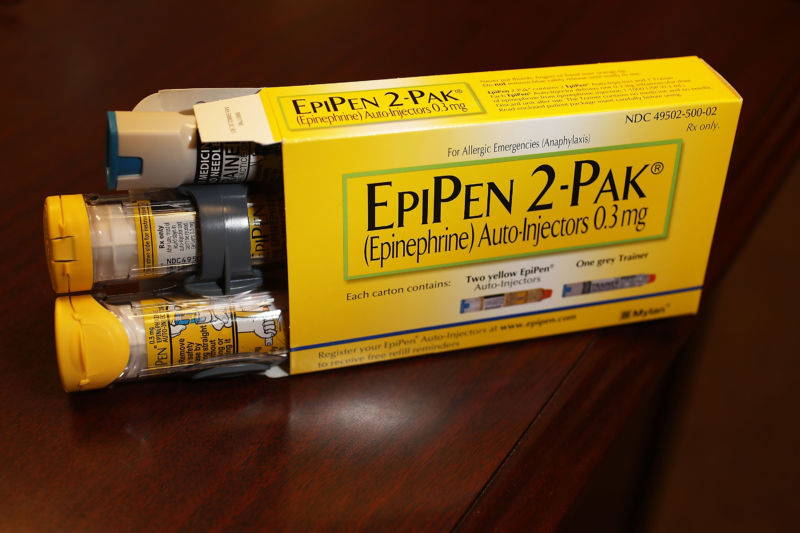
While facing intense outrage for repeatedly jacking up the price of their life-saving epinephrine auto-injectors, Mylan continually argued that patients were shielded from the soaring list price—thanks to insurance coverage, discounts, and rebates. But a new study looking into insurance claims casts doubt on that defense.
Between 2007 and 2014, the average out-of-pocket spending per insured EpiPen-user jumped 123 percent. During that time, Mylan raised the list price of EpiPens from around $50 per pen to a whopping $609 per two-pack. In 2007, the year Mylan obtained the rights to EpiPen, the average patient spent around $33.8 out-of-pocket for a two-pack. By 2014, the average spending rose to $75.5 per two-pack, according to the new analysis published Monday in JAMA Internal Medicine.The figures don’t square neatly with Mylan’s assurances. The company repeatedly claimed that most patients weren’t significantly affected by the price hikes and pay only $50 out-of-pocket or less. Reuters reports that Mylan even claimed that about 90 percent of patients paid that little.
To get to the real numbers, authors Kao-Ping Chua and Rena Conti of the University of Chicago dug through insurance claim records of 191.2 million patients between 2007 and 2014. Though not all of EpiPen users are insured, the records accounted for 70 percent of all EpiPen prescriptions—so a solid chunk of Mylan’s overall customers.
The researchers first noted that, while the total number of prescriptions increased over the period, the number of prescriptions filled per patient didn’t change significantly.
But, as the list price increased, more people saw higher bills. The fraction of insured patients that had to shell out more than $100 out-of-pocket jumped from 3.9 percent in 2007 to 18 percent in 2014. The proportion paying more than $250 also rose dramatically, from 0.1 percent to 7.4 percent.
In all, the average total out-of-pocket spending on EpiPens per patient per year rose from $123.9 in 2007 to $468.7 in 2014.
“For EpiPen in particular, failing to fill a prescription due to cost could mean the difference between life or death when serious allergic reactions occur,” Chua told Reuters in an e-mail. “This is why Mylan’s EpiPen price hikes are so ethically troublesome.”
Since the backlash, Mylan has introduced a $300 generic EpiPen, and some insurance companies now refuse to cover the brand-name version. In January, CVS and Impax Laboratories announced a deal to offer an alternative that costs $109.99 with or without insurance. With a coupon from Impax, the price drops to $10.JAMA Internal Medicine, 2017. DOI: 10.1001/jamainternmed.2017.0252 (About DOIs).
reader comments
155